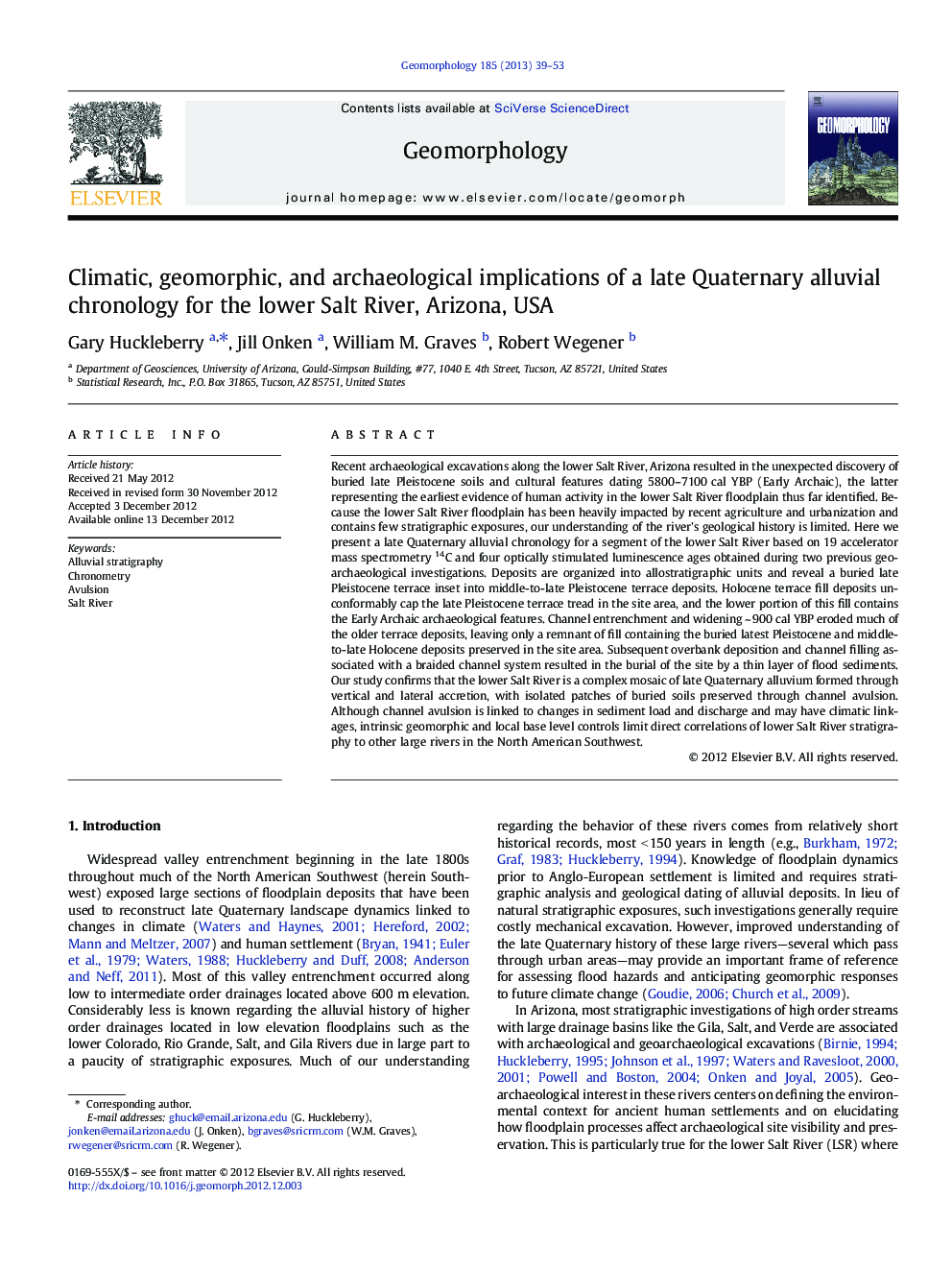| Article ID | Journal | Published Year | Pages | File Type |
|---|---|---|---|---|
| 4684938 | Geomorphology | 2013 | 15 Pages |
Recent archaeological excavations along the lower Salt River, Arizona resulted in the unexpected discovery of buried late Pleistocene soils and cultural features dating 5800–7100 cal YBP (Early Archaic), the latter representing the earliest evidence of human activity in the lower Salt River floodplain thus far identified. Because the lower Salt River floodplain has been heavily impacted by recent agriculture and urbanization and contains few stratigraphic exposures, our understanding of the river's geological history is limited. Here we present a late Quaternary alluvial chronology for a segment of the lower Salt River based on 19 accelerator mass spectrometry 14C and four optically stimulated luminescence ages obtained during two previous geoarchaeological investigations. Deposits are organized into allostratigraphic units and reveal a buried late Pleistocene terrace inset into middle-to-late Pleistocene terrace deposits. Holocene terrace fill deposits unconformably cap the late Pleistocene terrace tread in the site area, and the lower portion of this fill contains the Early Archaic archaeological features. Channel entrenchment and widening ~ 900 cal YBP eroded much of the older terrace deposits, leaving only a remnant of fill containing the buried latest Pleistocene and middle-to-late Holocene deposits preserved in the site area. Subsequent overbank deposition and channel filling associated with a braided channel system resulted in the burial of the site by a thin layer of flood sediments. Our study confirms that the lower Salt River is a complex mosaic of late Quaternary alluvium formed through vertical and lateral accretion, with isolated patches of buried soils preserved through channel avulsion. Although channel avulsion is linked to changes in sediment load and discharge and may have climatic linkages, intrinsic geomorphic and local base level controls limit direct correlations of lower Salt River stratigraphy to other large rivers in the North American Southwest.
► We describe an alluvial chronology for the lower Salt River in Phoenix. ► Four allostratigraphic units are identified and dated by AMS 14C and OSL. ► Latest Pleistocene and Holocene buried surfaces are preserved by channel avulsions. ► Archaic habitation features dated 5800–7100 cal YBP are preserved in subsurface. ► Local geomorphic controls obscure climatic links to local floodplain dynamics.
